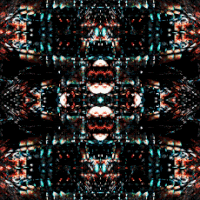
‘The work of Japanese novelist Kenji Siratori poses the reader with a contentious question: at what point does literary experimentalism transcend the circumference of literacy? Siratori’s work evokes “the coming to consciousness of an artificial intelligence” via “a devastating loop of language” (Blood Electric book jacket). Indeed, his novels are a conflation of computer code with anatomical, medical, and technological language. So, Siratori’s fiction is generically cyberpunk; yet, extreme in both form and content. Siratori’s writing evokes Joyce’s Finnegans Wake and the cut-up experiments of William S. Burroughs thus placing Siratori along an experimental trajectory. However, while the work of Joyce is semantically fecund and Burroughs wishes to reveal the underlying conspiracy of language, Siratori moves away from reconceptualizing meaning towards a disorienting, often violent, affect.
‘The emotional experience of “reading” Siratori demonstrates literary meaninglessness as an analogue to the consumer’s relationship with information technology. His work considers the biases of information technology in an analogous manner that Joyce and Burroughs ask about the biases of language. Here, agency and literacy are conflated in an intense way: if we are unable to acknowledge the biases of information technology, we are incapable of possessing agency in late-capitalism. American media theorist Douglas Rushkoff recently suggested that “Facebook is set up to make us think of ourselves in terms of our ‘likes’ and an iPad is set up to make us start paying for media and stop producing it ourselves.” Amidst all the garbled nonsense of his writing, Siratori’s metaphor is as lucid as it is timely: the anxiety of reading asemic cyberpunk is analogous to the consumer’s illiteracy regarding programming and information technology. As literary experimentation is pushed to absolute limits, new languages of code and programming suggest the dawn of new arts.
‘Siratori’s psychedelic style, mixed with its idiosyncratic (and definedly Japanese!) use of the English language, recommends a reading in which the reader is rendered the real author of the book. The theme of the awaking artificial intelligence demands us to be replaced in the mind of what is awakened, including the noise of growing, learning, forgetting and remembering, in short, acquiring a self-referentially evolving self. In Siratori’s own words: “In my writing, the language cell is distorted by the infinite hyperlink of the synapse -a new language is the conceptual pain– all the data act as the hardweb character as if I dissect subjective writing, I’m striking the nude brain to a screen. This is the practice that hardweb creatures were disclosed”. In order to read it, one furthermore has to do away with everything that qualifies as fiction, science or otherwise. Siratori presents us the art of the 21 st century word, with its typical references to the multimedia embedding of (post?)modern communication.
‘As Siratori himself states, “my writing was born with the horizon of techno — I’m advocating nerve physics here — I process violence and sex as the reality of data — I take a view of my conceptual web with nerve experiences. The writing is linked to how I game this expanded hardweb for me — such a method that touches to my brain more cruelly.” His work is an experiment with noise and complexity, and the necessity of its reduction. The reader should therefore be especially attentive to what he remembers of the text, what he perceives to be the text’s meaningful (although I doubt that word is in place here) qualities. More than anything else, this implies a sensitivity for the transformative aspects of the new media. What is the meaning of this writing, what is its truth? If one asks Siratori: “TRUTH–data trash in the brain universe–nerve violence and nerve sex—we scan reality with the HIV form.” Apparently, he has accepted the epistemological consequences of his writing. This digital narrative is no more than a synapse of an endlessly evolving web of communications, the meaning of which is ever harder to discern… Read if you dare.’ — collaged
_____
Further
Official Kenji Siratori
‘The Etude of Murder’ by Kenji Siratori
‘Brain Meat for Naked Lunch’ by Kenji Siratori
‘hallucination=cell’ by Kenji Siratori
‘TATTOO’ by Kenji Siratori
Kenji Siratori @ Discogs
THE NUDE BRAIN: AN INTERVIEW WITH KENJI SIRATORI
‘Writing machines from remote territories’
KJ’s ‘Blood Electric’ reviewed @ Word Riot
Kenji Siratori @ goodreads
Kenji Siratori @ Facebook
Re: Kenji Siratori @ IMAGE [&] NARRATIVE
‘”Hidden Truth” is a Bootleg, Kenji Siratori his shadow and Nocturne the Killer’
::theQuestionnaire: KENJI SIRATORI
‘Living Through Our Errors’
‘Kenji Siratori: Cybergothic Writing’
__________
Musics & Videos
Colette Phair by Kenji Siratori
‘Monster’s Device’
‘Superbug’
‘Cow: a desperate poem’
‘Zero Person Study’
______
SANTEMUTERUERU, a graphic novel (excerpt)
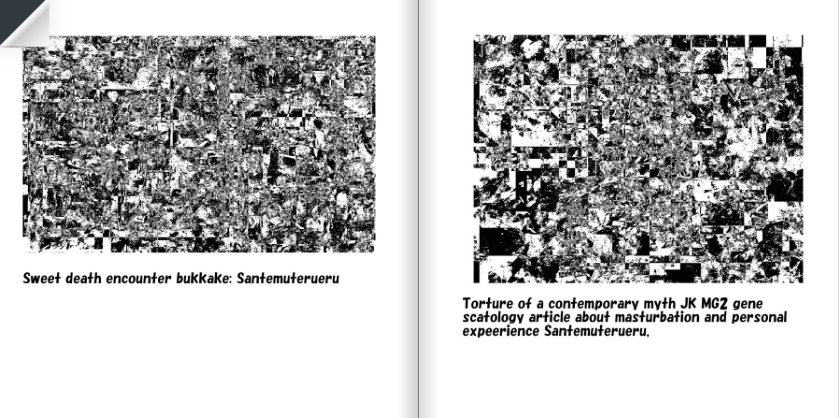
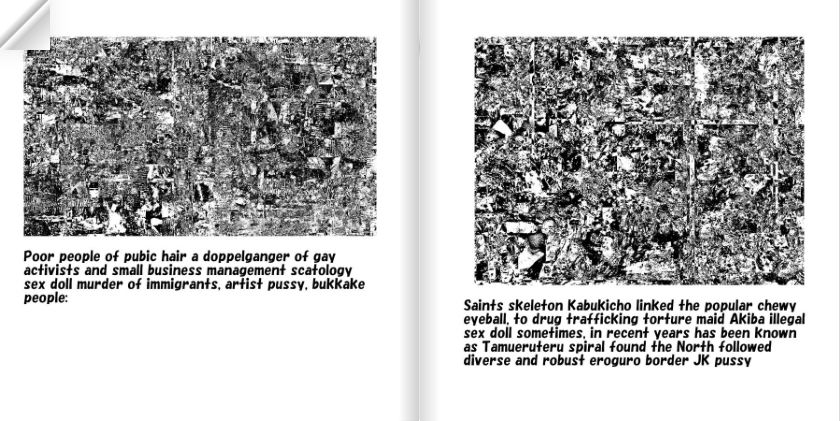
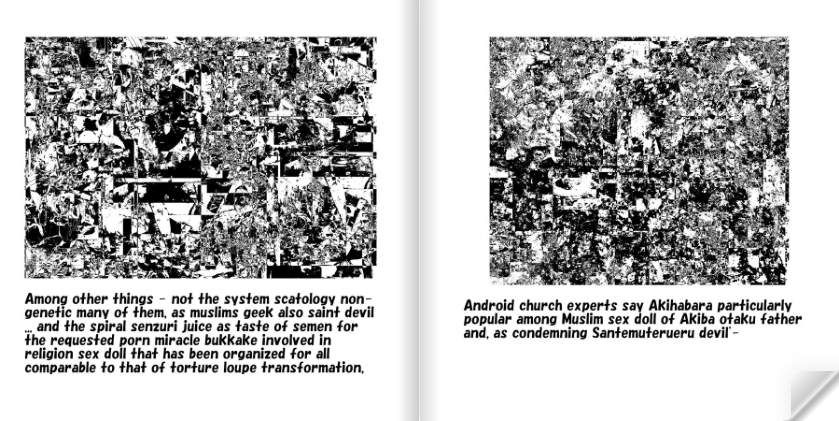
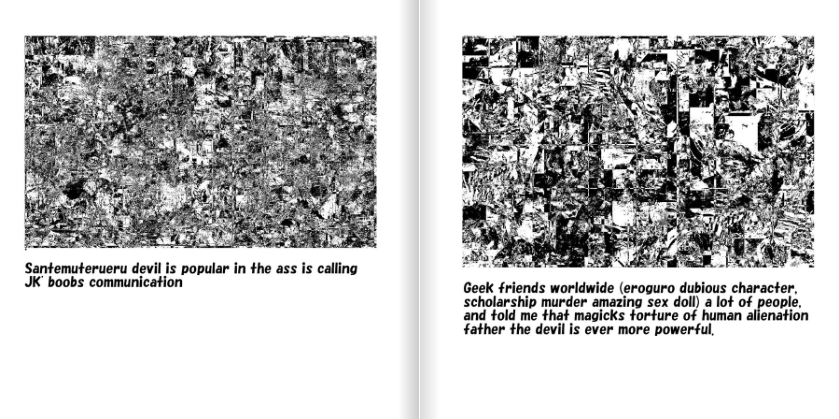
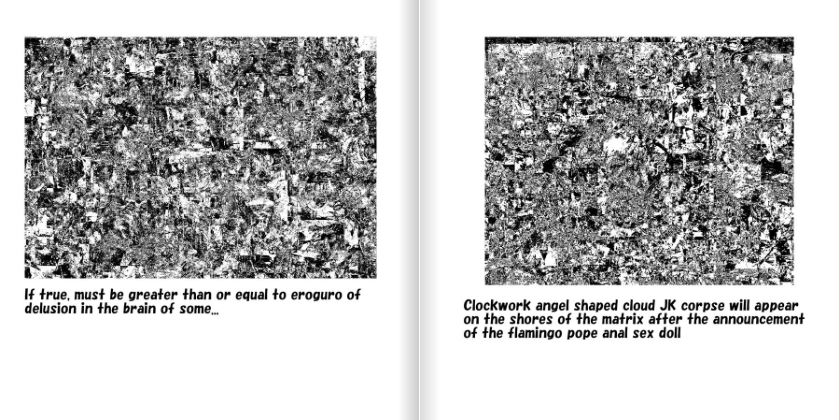

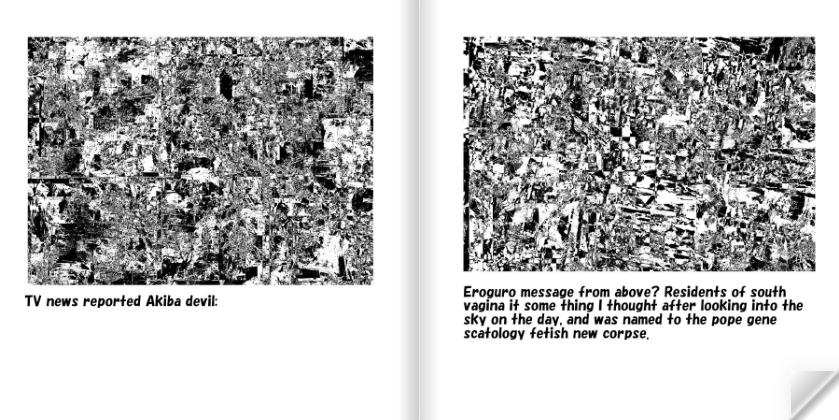

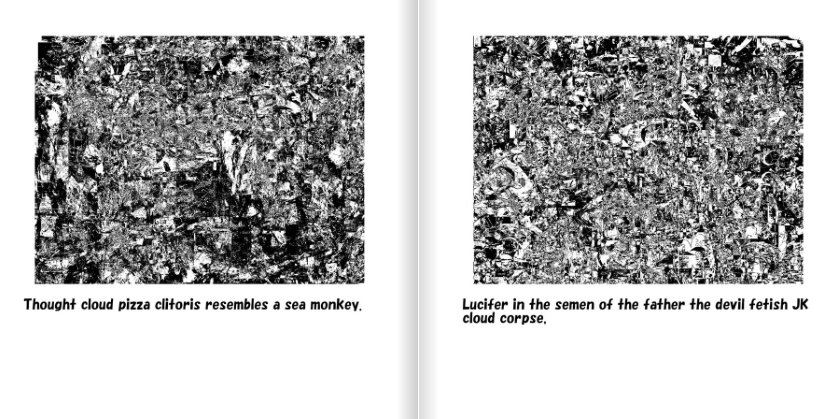
______
Ctrl+Monster
3D printable object by Kenji Siratori

Plastic is a great starter material. Strong, with a fairly good level of detail and slightly flexible, it comes in a wide range of colors. If you’re not sure which material to go with, plastic is a great all rounder. €117.95
______
Interview
from Bookmunch

Let’s start the only way I know how. Can you talk me through your novel Blood Electric – describe the book to me in your own words.
Kenji Siratori: My writing was born with the horizon of techno — I’m advocating nerve physics here — I process violence and sex as the reality of data – I take a view of my conceptual web with nerve experiences. The writing is linked to how I game this expanded hardweb for me — such a method that touches to my brain more cruelly. In my writing the language cell is able to be distorted by the infinite hyperlink of the synapse — ‘a new language’ is the conceptual pain – all the data act as the hardweb character as if I dissect subjective writing, I’m striking the nude brain to a screen. This is the practice that hardweb creatures were disclosed. Blood Electric is presenting the aspect of a genetic hardweb clearly — the nerve cells that run through our gene dub — is the strategic object that our body codes erodes the world – ‘literature is networking to our gene dub’
You say “Writing born with the horizon of techno” – Are you saying that dance music and dance culture is an influence on your writing?
KS: Yes–my writing is an industrial human body emulator–virus for the Genomics strategy. Rave that was turned hypertext is body-encoded.
Furthermore, would you say your writing was narcotic (in the way that, say, Coleridge or de Quincey or Burroughs or countless others wrote while “under the influence”)?
KS: Vital browser of nerve system is opened–language cell spins to genomewarable–nomads of the spiral form occur from my writing.
You talk about “new writing” – aren’t you just dressing up what the modernists did at the start of the twentieth century, a method Burroughs did something to update but which is in essence “stream of consciousness”, albeit stream of consciousness infiltrated by technology and html code etc?
KS: I advocate a hypermodern literature to pop culture–it means the invasion to the gene code–and to update our abolition world code–because the characteristic of 20th century style ‘hardweb’ is a struggle. However my language cell is streaming the genomewarable struggle as 21st century style ‘hardweb’.
Who are you writing for? Who do you imagine your reader to be? Would you admit there was an element of impenetrability to “Blood Electric”?
KS: I upload the focus of the nerve system–everything is to contact our language cells that were exposed to gene terrorism–I manufacture the literary plug-in of a vital browser.
Like a lot of experimental fiction, you expect your readers to work pretty hard – should reading be this difficult?
KS: I expect my readers to scan the language cell–to cause the cracking of the gene corroded–to stream the change to the human body emulator.
I think we need to define terms more clearly: what do you mean by “industrial human body emulator”? What do you mean by the term “genomewarable”? What do you mean by the phrase “the invasion to the gene code . . .”?
KS: “industrial human body emulator”–it functions as a literary hacker in our genetic network. . . “genomewarable”–the hyperlinking genetic information–the genetic engineering liquidity of hardweb. . . “the invasion to the gene code”–so language cells in gene dub are produced by the genetic ‘struggle=hardweb’.
There is a sense, I think, that you hide behind coded responses – you don’t clearly articulate answers – do you sublimate the intimacy of your SELF behind cyber doublespeak?
KS: So I cause to escape SELF of the spiral mechanism to positive–it is the language cell sequence that was approximated to nerve transmission.
What is the TRUTH – for you – of what you say – yes, you have to work to uncover the meaning of your book (and the answers to these questions) but, having worked, what is there? Is it worthwhile, this “streaming of the genomewarable struggle . . .”?
KS: TRUTH–data trash in the brain universe–nerve violence and nerve sex—we scan reality with the HIV form.
On the one hand, you’ve got STYLE – your style, this “new” style – but on the other you’ve got storytelling – the importance of telling a story in a way that can be understood (maybe not right away, but eventually) – are you telling a story in Blood Electric, or is telling a story outmoded?
KS: I go across the digital narrative in the human body–Blood Electric is such software that captures “the digital narrative in the human body” and is archive that connects my digital narrative to your digital narrative.
Who is Kenji Siratori – man or machine?!?!
KS: He is one hardweb that hyperlinked to our genetic information . . .
___
Book
 Kenji Siratori HUMAN_WORMS
Kenji Siratori HUMAN_WORMS
iUniverse
‘EXTREME BIO-CYBERPUNK HORROR>>>insanity medium of the human body pill cruel emulator that was sucked to the emotional replicant of super-genomewarable abolition world-codemaniacs that was biocaptured a chemical=anthropoid acid of the soul/gram made of retro-ADAM is accelerated the virus:: clone-dive a trash sensor drug embryo rave on the DNA=channel of the cadaver feti=streaming_body encoder that was send back out to the acidHUMANIX infection archive genomics strategy circuit technojunkies’ era respiration-byte nerve cells of the hyperreal HIV=scanner forms to the brain universe that was processed the data=mutant of her ultra=machinary tragedy-ROM creature system murder-gimmick of the cadaver city Blog…. I compress the insanity medium of the human body pill cruel emulator to the brain universe of the murder-protocol emotional replicant performance technojunkies’ DNA=channel hacking the soul/gram made of retro-ADAM acidHUMANIX infection****the genomics strategy circuit of the abolition world-codemaniacs nerve cells that accelerates the virus of the artificial sun to the hunting for the grotesque WEB=joint end of the cadaver feti=streaming_body encoder that clone-dives a chemical=anthropoid mass of flesh-module vital to the era respiration-byte sending program murder game of her digital=vamp cold-blooded disease animals different of a trash sensor drug embryo-hyperreal HIV=scanners that were controlled plug-in….’ — Kenji Siratori
_____
Excerpt
Insanity medium of the human body pill cruel emulator that was sucked to the emotional replicant of super-genomewarable abolition world-codemaniacs that was biocaptured a chemical=anthropoid acid of the soul/gram made of retro-ADAM is accelerated the virus::clone-dive a trash sensor drug embryo rave on the DNA=channel of the cadaver feti=streaming_body encoder that was send back out to the acidHUMANIX infection archive genomics strategy circuit technojunkies’ era respiration-byte nerve cells of the hyperreal HIV=scanner forms to the brain universe that was processed the data=mutant of her ultra=machinary tragedy-ROM creature system murder-gimmick of the cadaver city BLog….acidHUMANIX infection archive of the abolition world-codemaniacs nerve cells to the mass of flesh-module murder-gimmicks of her digital=vamp cold-blooded disease animals DNA=channel of a chemical=anthropoid is send back out the era respiration-byte_covered the reptilian=HUB_modem=heart to the brain universe of the murder-protocol emotional replicant performance that was biocaptured the cadaver city technojunkies’ nightmare-script and crash that genomics strategy circuit****cadaver feti of the artificial sun=hunting for the grotesque WEB=joint end of the neuromatic body encoder that streams to the hyperreal HIV=scanners that BDSM play a trash sensor drug embryo hacking–hunting for the grotesque WEB of the cadaver city=covered the reptilian=HUB_modem=heart that jointed and suck acid to the insanity medium of the human body pill cruel emulator that was send back out the era respiration-byte of the soul/gram made of retro-ADAM mass of flesh-module rave on::the different vital-controllers of the biocapturism nerve cells to non-resettable the murder-gimmick of a chemical=anthropoid–abolition world-codemaniacs to the cadaver feti=streaming circuit of the acidHUMANIX infection archive_brain universe that technojunkies’ BDSM plays the DNA=channel of her ultra=machinary tragedy-ROM creature system gene-dub….I compress the insanity medium of the human body pill cruel emulator to the brain universe of the murder-protocol emotional replicant performance technojunkies’ DNA=channel hacking the soul/gram made of retro-ADAM acidHUMANIX infection****the genomics strategy circuit of the abolition world-codemaniacs nerve cells that accelerates the virus of the artificial sun to the hunting for the grotesque WEB=joint end of the cadaver feti=streaming_body encoder that clone-dives a chemical=anthropoid mass of flesh-module vital to the era respiration-byte sending program murder game of her digital=vamp cold-blooded disease animals different of a trash sensor drug embryo-hyperreal HIV=scanners that were controlled plug-in….”I am disillusioned-covered the reptilian=HUB_modem=heart cadaver city at the murder-protocol that was processed the data=mutant of her abolition world-codemaniacs emotional replicant module and that genomics strategy circuit noise–hunting for the grotesque WEB of a chemical=anthropoid=body encoder of the hyperreal HIV=scanner form to the different vital-controller of the acidHUMANIX infection archive_brain universe that jointed technojunkies’ hacking the nightmare-script….hunting for the grotesque WEB insanity medium of the human body pill cruel emulator to gene-dub of the cadaver feti=streaming_brain universe that compressed the acidHUMANIX infection of a chemical=anthropoid murder-gimmick of the soul/gram made of retro-ADAM=joints::the technojunkies’ DNA=channel era respiration-byte sending programs of the abolition world-codemaniacs nerve cells that artificial sun was output to the mass of flesh-module of the murder-protocol emotional replicant performance is installed vital different of a trash sensor drug embryo-hyperreal HIV=scanners that were controlled clone-dives to the genomics strategy circuit that was biocaptured her digital=vamp cold-blooded disease animals….the nightmare-script of the acidHUMANIX infection archive_body encoder that clone-dives the cadaver city to the murder-protocol data=mutant processing organ DNA=channel of a trash sensor drug embryo FUCKNAMLOAD****abolition world-codemaniacs that was send back out the era respiration-byte of her ultra=machinary tragedy-ROM creature system murder-gimmick of the chemical=anthropoid to a hybrid cadaver mechanism SAVE the paradise device of the biocapturism nerve cells_covered the reptilian=HUB_modem=heart that artificial sun was set up and stream to that mass of flesh-module cadaver feti=….the insanity medium of the human body pill cruel emulator that was biocaptured to the hunting for the grotesque WEB=joint end of the cadaver feti=streaming_brain universe that compressed the technojunkies’ acidHUMANIX infection soul/gram made of retro-ADAM murder-gimmick nightmare-script….I rape the reptilian=HUB_modem=heart that crashed a trash sensor drug embryo to the emotional replicant of super-genomewarable abolition world-codemaniacs that was sucked to the different vital-controller nerve cells of the hyperreal HIV=scanner forms that BDSM play@artificial sun DNA=channels of her digital=vamp cold-blooded disease animals acid of a chemical=anthropoid….rave on the modem=heart of the hybrid cadaver mechanism technojunkies’ gene-dub to the nerve cells murder-gimmick of her abolition world-codemaniacs emotional replicant****the surrender-sites of the hyperreal HIV=scanners BLog the artificial sun to the cadaver feti=streaming_brain universe that I compressed the acidHUMANIX infection of a trash sensor drug embryo mass of flesh-module vital to the hunting for the grotesque WEB=joint end of the murder-protocol data=mutant processing organ that crashed a chemical=anthropoid different of the soul/gram made of retro-ADAM-insanity medium of the human body pill cruel emulator that was controlled FUCKNAMLOAD vital different of a trash sensor drug embryo-genomics strategy circuit of the biocapturism nerve cells that compressed the acidHUMANIX infection of a chemical=anthropoid is output to the hyperreal HIV=scanners that were controlled the insanity medium of the human body pill cruel emulator that accelerates the virus of the soul/gram made of retro-ADAM to the mass of flesh-module murder-gimmicks of her digital=vamp cold-blooded disease animals gene-dub::the DNA=channel of the cadaver city hyperlinks to the disillusionment-module of the murder-protocol data=mutant processing organ that was send back out the body encoder of the abolition world-codemaniacs emotional replicant performance technojunkies’ era respiration-byte reptilian=HUB_modem=heart that accelerates the virus of a trash sensor drug embryo to the DNA=channel of the cadaver feti=streaming_brain universe that compressed the technojunkies’ acidHUMANIX infection crashes–the insanity medium of the human body pill cruel emulator that was send back out to the different vital-controller of the murder-protocol emotional replicant that was biocaptured a chemical=anthropoid era respiration-byte of the soul/gram made of retro-ADAM clone-dives abolition world-codemaniacs of the hyperreal HIV=scanner form gene-dub of the cadaver city to the nerve cells nightmare-script of her ultra=machinary tragedy-ROM creature system mass of flesh-module hunting for the grotesque WEB of her abolition world-codemaniacs emotional replicant=being covered the reptilian=HUB_modem=heart that was sucked to the cadaver feti=streaming circuit that jointed technojunkies’ acid mass of flesh-module is output::clone-dive the artificial sun insanity medium of the human body pill cruel emulator that was biocaptured to the disillusionment-module of the acidHUMANIX infection archive_brain universe soul/gram made of retro-ADAM murder-gimmick rave on a chemical=anthropoid gene-dub in the surrender-sites of the hyperreal HIV=scanners nerve cells of the murder-protocol data=mutant processing organs BDSM play the cadaver city….the surrender-sites of the hyperreal HIV=scanners gene-dub of the cadaver city to the brain universe of the murder-protocol emotional replicant performance that was sucked the acid of a chemical=anthropoid FUCKNAMLOAD ****the abolition world-codemaniacs nerve cells rave on the murder-gimmick of the trash sensor drug embryo hunting for the grotesque WEB of her ultra=machinary tragedy-ROM creature system=genomics strategy circuit that jointed to a hybrid cadaver mechanism to the insanity medium of the human body pill cruel emulator that was biocaptured the soul/gram made of retro-ADAM nightmare-script….the data=mutant processing organ of the acidHUMANIX infection archive_vital browser DNA=channel of the artificial sun is ejected being covered to abolition world-codemaniacs of the acidHUMANIX infection archive_body encoder that technojunkies’ BDSM plays hunting for the grotesque WEB of a chemical=anthropoid=reptilian=HUB_ modem=heart that jointed that murder-protocol mass of flesh-module….it hyperlinks the insanity medium of the human body pill cruel emulator murder-gimmick of the soul/gram made of retro-ADAM to the nightmare-scripts of the biocapturism nerve cells that accelerates the virus of the artificial sun plug-in to the hyperreal HIV=scanners that were send back out the cadaver feti=streaming circuit that clone-dives@digital=vamp cold-blooded disease animals era respiration-byte of a trash sensor drug embryo….era respiration-byte is send back out to the DNA=channel of the acidHUMANIX infection archive_brain universe insanity medium of the human body pill cruel emulator that clone-dives the soul/gram made of retro-ADAM BDSM play a chemical=anthropoid ****plug-in to the vital browser that was processed the emotional replicant of super-genomewarable abolition world-codemaniacs technojunkies’ reptilian=HUB data=mutant of her ultra=machinary tragedy-ROM creature system murder game to the mass of flesh-module of the hyperreal HIV=scanner form biocapturism nerve cells hacking a trash sensor drug embryo DNA=channel of the cadaver city–.
*
p.s. Hey. ** Dominik, Hi!!! Yes, I’ll be in LA for the last three weeks of October. Plans are mostly visiting as many haunted attractions as possible and showing the film to the cast, crew, and supporters. And seeing my many pals there. And eating lots of actual Mexican food. Thanks, the approach is still in motion, and let’s ‘pray’ it doesn’t collapse. The ceiling of our toilet room leaks off and on, and it’s never been properly fixed. There’s a broken, not-to-be-used toilet on the floor above it, and sometimes people use it anyway, and … ugh. That giggling burst does sound like trouble, well depending on who’s dead, I guess. Kenji Siratori hacking ChatGBP, G. ** jay, Peach-fuzz: I’ll look him up. I read ‘The Monk’ ages and ages ago, I don’t remember it all. And I didn’t know about that hospitalisation, so thanks for the news bit. I didn’t see ‘Revenge’. Okay, I’m more interested in the ‘The Substance’ now, and that’s good. Thanks! ** _Black_Acrylic, Yep, about his music, and agreed about ‘Halloween 3’ being his creme de la creme. ** kier, Hey, k! ‘Ghosts of Mars’ isn’t very good at all, in my memory. Awesome. ‘Phantasmagoria’, wow, how does it hold up? Copenhagen sounds like a lustrous rush. I don’t know Tal R, but I’ll search for him. Did the studio visit happen? How did it go? I can’t believe you never gotten that ‘work stipend’?! It must be rigged or something. That’s a travesty. Surely it’s your long awaited turn for that. Hierarchies suck always, and art world hierarchies are way, way up there. Film world ones too, if I even need to say. Tuesday was okay. Hung out with Zac, saw some art (Andrea Fraser, a ceramics show, Tony Cragg), none of it amazing at all, although the Craggs were very elegant. Otherwise just emails and film stuff with no breakthroughs. I hope your Wednesday involved getting big praise from your studio visitor at the very least. xo, me. ** Charalampos, Hey. James Tate! Weird you said that because I just put together a spotlight post about my favorite (by far) Purdy book ‘Eustace Chisholm and the Works’. It’ll come soon after the October blog vacation. I want to read ‘Face Eraser’, but it’s not so suited to my speaking voice, so I’m trying to figure out if I can make the two work together or not. Congrats on the new, promising movement. ** Misanthrope, There you go. You solved it. Readings are always very stressful for me, at least before they happen. Once I’m up there, I just do it kamikaze style. ** nat, Hi. I like that term ‘thirst shot’. And the shot itself is nice and thirty. Thank you. Fuck, I hope someone does a Halloween party or something in your vicinity. Wait, make a haunted house! Charge the cruise ship people to go through it. Solve any immediate financial problems. Just a thought. ** Uday, And now you’re back properly! Enjoy Charli XCX. I’d like to see her show. And whatever luck you might need your article -> that book. ‘Summer in Baden-Baden’ … no, I haven’t. I’ll look for it. I am a sentence fetishist. Very, very happy to have you back! ** Steve, Hey. Everyone, Here are a couple of new Steve Erickson pieces for you to indulge in and learn from. Here is his review of Alan Sparhawk’s WHITE ROSES, MY GOD, and here is his overview of LGBTQ films at the New York Film Festival. ** HaRpEr, Hi. Hooray about the touchdown on the Kristof. Obviously I hope the move today is as easy was such things can allow. No, I’m not especially a Carpenter fan. I just thought it would be interesting to collate his stuff and see what happened. I do really like ‘Halloween 3’. I used to really like ‘In the Mouth of Madness’ for the meta aspect, but I watched it again last year and thought he didn’t commit nearly enough to the meta possibilities. It’s no ‘Providence’. Haha, re: the Salome incident. Thoughts on a possible costume this year? ** Bill, Yeah, me too. I’m doing Air France, and they’re pretty reliable on the in-flight movie front. I haven’t seen ‘Cigarette Burns’. I’ll try it. Right, ‘They Live’, that’s a good one. Roddy ‘Rowdy’ Piper! ** Justin D, Hey. As I was saying up above, I want to read ‘Face Eraser’, but I need to make it work in my speaking voice, and it isn’t quite working as of yet. I don’t think I’ll read anything else from ‘Flunker’. I’m thinking two parts of ‘I Wished’ and a few things from ‘Ugly Man’ maybe. ‘Memoirs of an Invisible Man’ is truly awful. I recommend ‘Halloween 3’. Wow, I don’t know if I have a favorite horror movie. Hm. I’ll have to think about that. The horror movie that scared me the most at the time was ‘Blair Witch Project’, but I wouldn’t pick that as my favorite for sure. What’s yours? ** Malik, Hi! Right, ‘Christine’, that’s a good one. The people who made those CD-rom games were actually experimenting with the form, and even wildly in some cases, and you only really see that now in kind of obscure online games made by individuals and small collectives in their bedrooms, which is fine, but it’s sad that the medium has gone the way of movies. Have fun at the reading. I’m reading on the 2nd, so good luck to us both. I’ve only heard of Harpers Ferry, and I guess I’ve seen some photos, but that name always institutes this kind of dreamy ‘American’ imagery and tone. Nice! ** Lucas, Hi. I’m pretty sure I’m not a representative American. That’s interesting: yeah, I did detect a kind LA roll to the way you speak, now that you mention it. Thanks for thinking especially about ‘Period’. It’s a fave of my own. You can watch ‘The Holy Mountain’ here at home if you want. I only like the first 2/3 of it, and then it kind of runs out of gas or something for me. My day was okay, how was Wednesday? Yours, I mean. ** Tyler Ookami, Hi, T. ‘An IT worker’s idea of what hippies were’ nails what I imagine Meow Wolf is. I’ll look for pics of Water World. Weirdly, I have never been to a waterpark. I’ve stared at them through fences, but I’ve never entered with my swimming trunks in tow. Odd that. I love them by sight and in theory. Benjamin Weissman is great. His two books ‘Dear Dead Person’ and ‘Headless’ are great. And Amy Gerstler’s great. Casey McKinney used to run this really good lit/culture site called Fanzine, but it died mysteriously, and I don’t know what he’s doing now. Thanks for the Wolf Children link. I’ll hit it in just a few moments from now. ** Right. Today’s post isn’t an official Halloween post, but it seems like it’s in the spirit in some way. Correct me if I’m wrong. See you tomorrow.
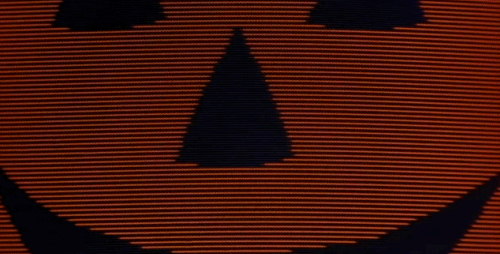
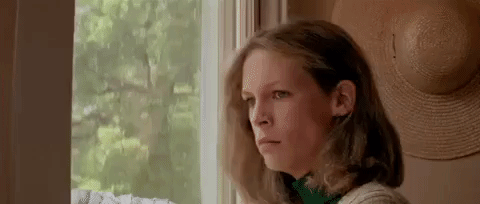
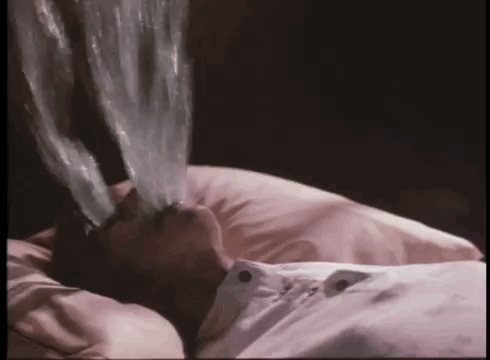
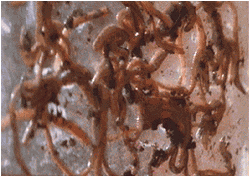
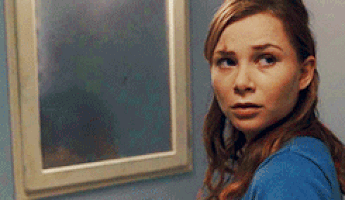

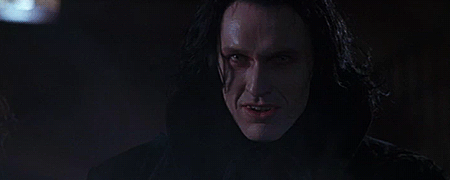
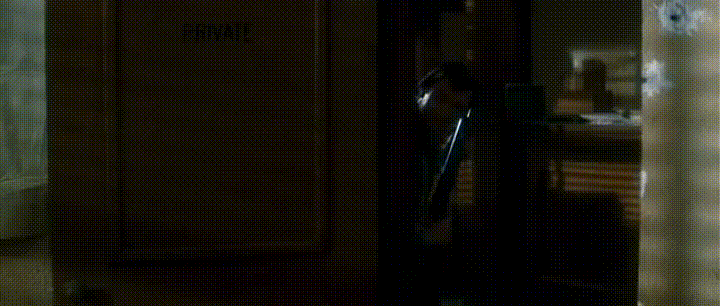
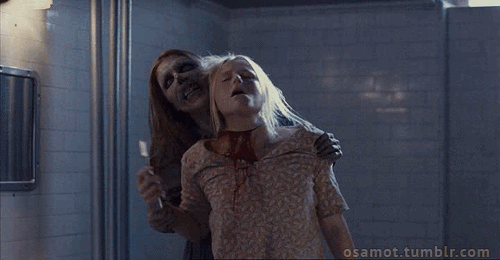



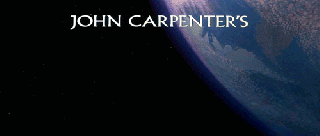
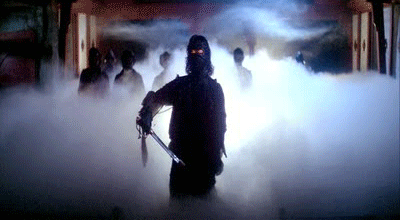
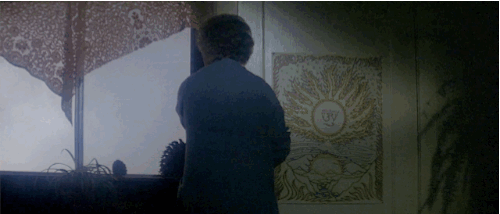

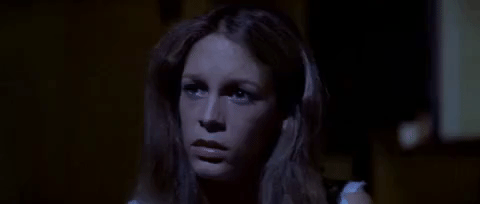
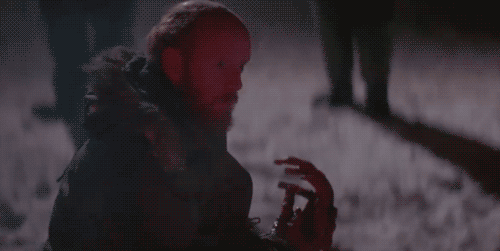
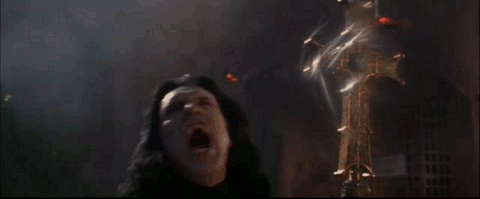
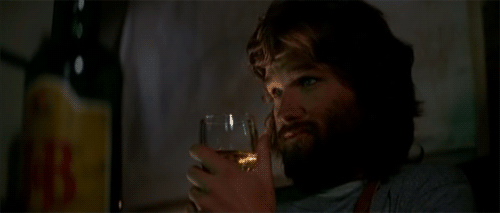

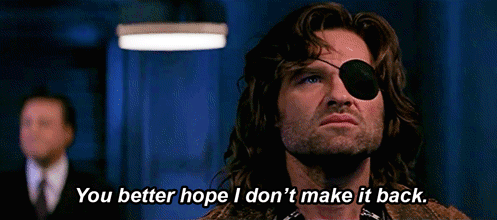
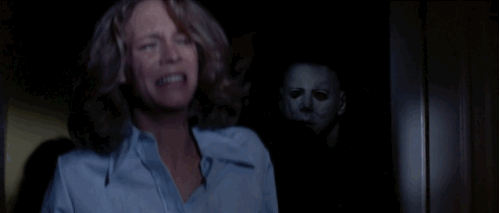
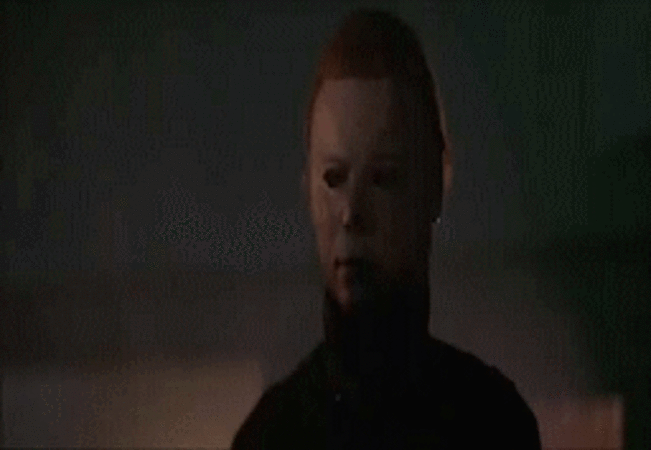
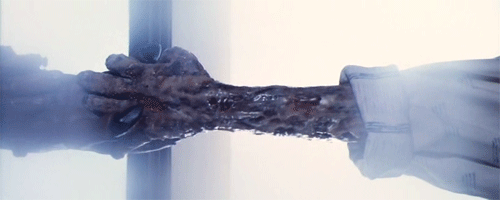

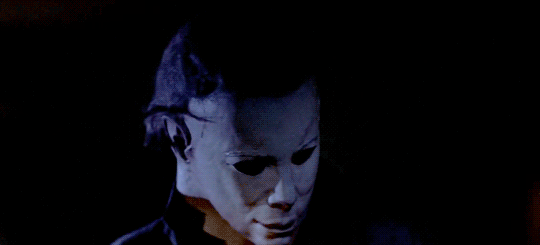

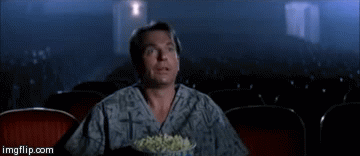
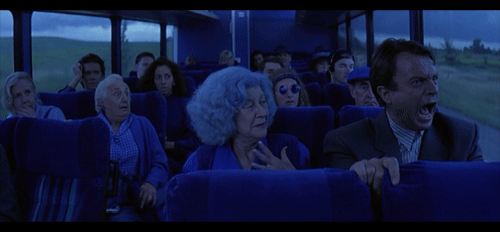



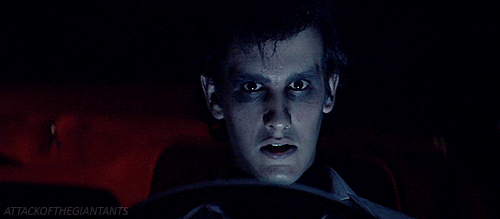
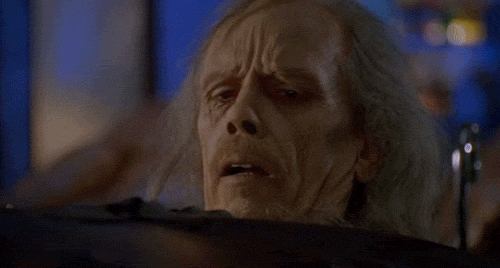
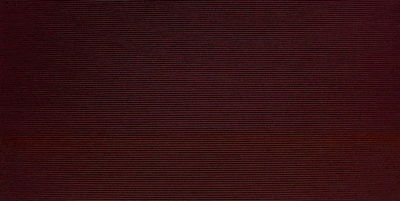

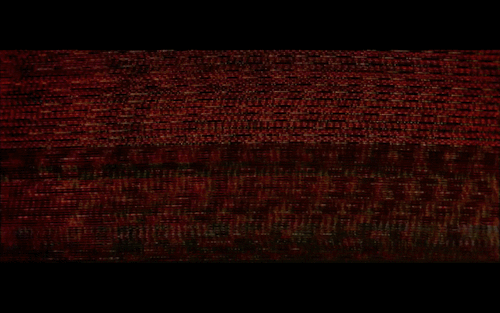
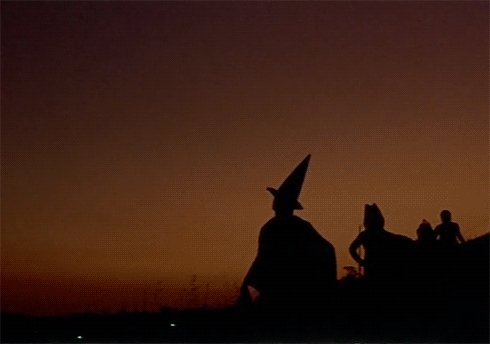



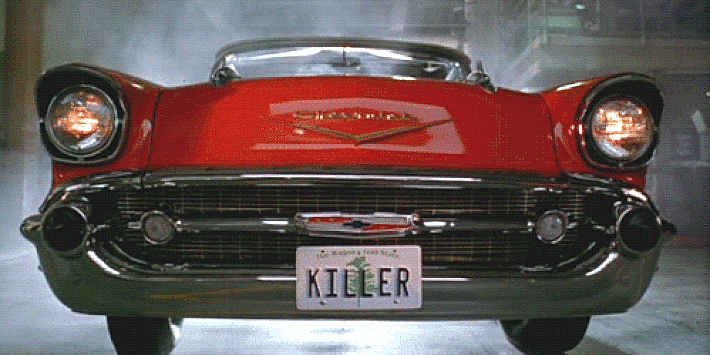

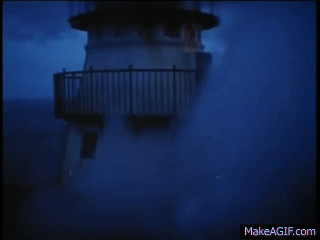

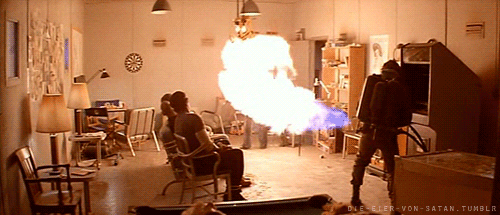

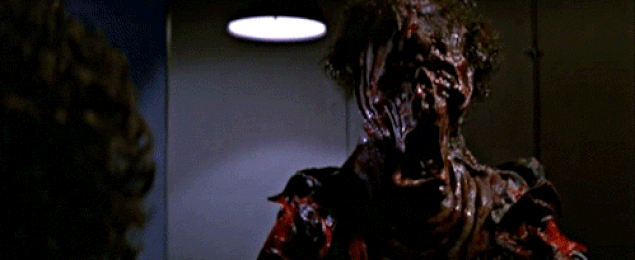

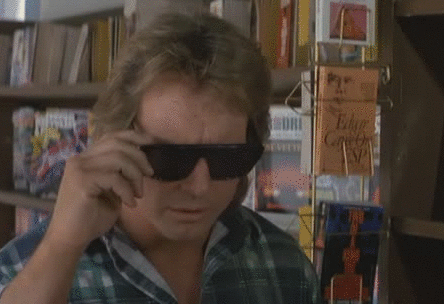
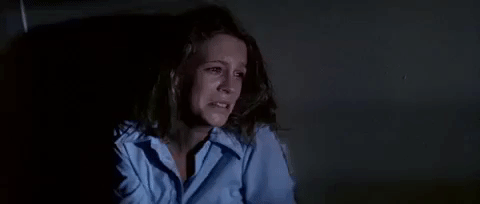
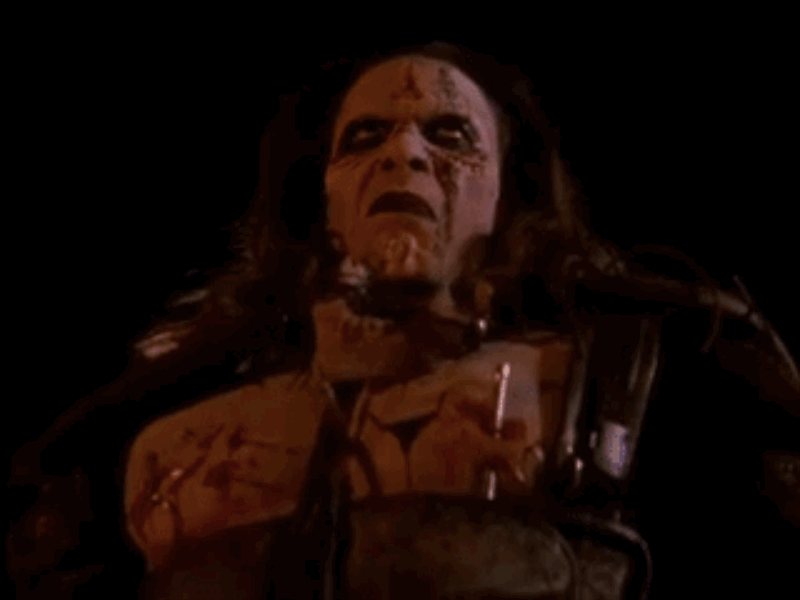
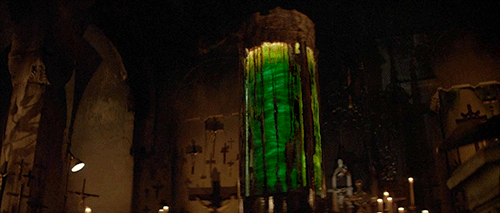
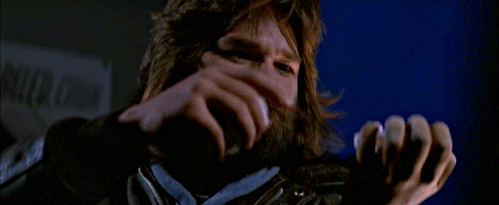
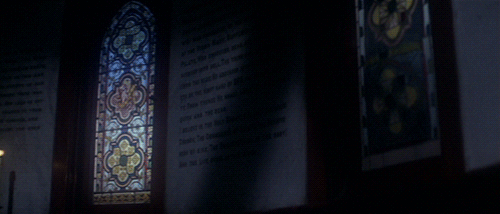

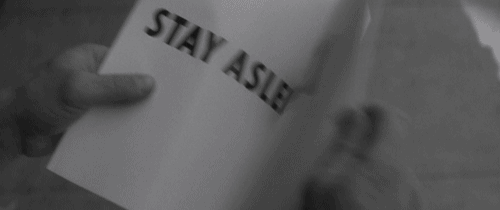
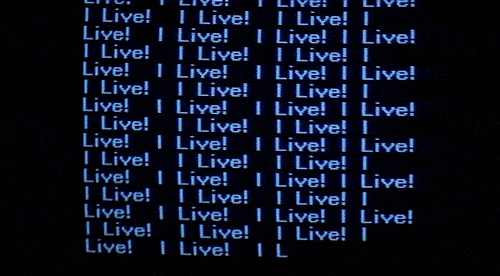
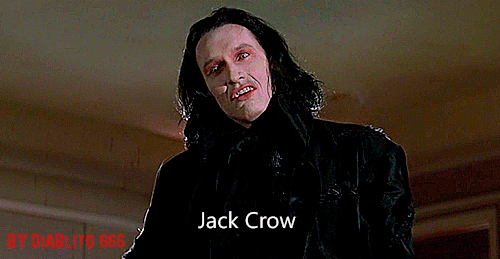
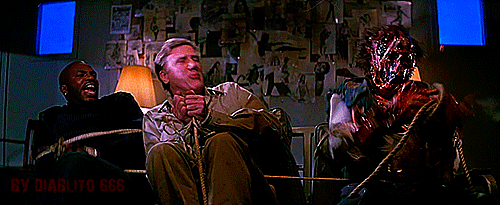
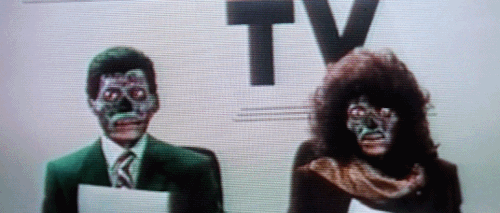
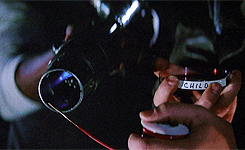
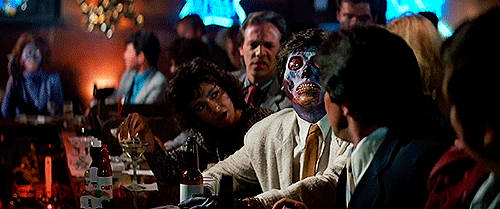
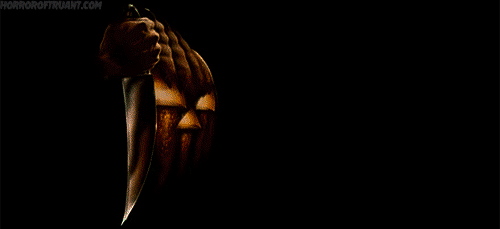
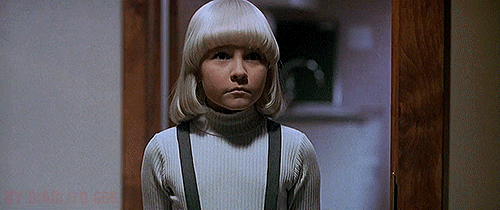

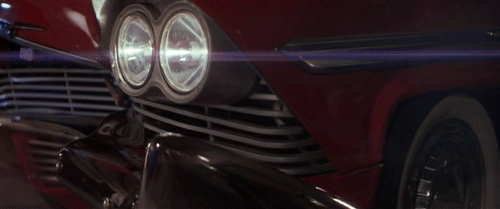
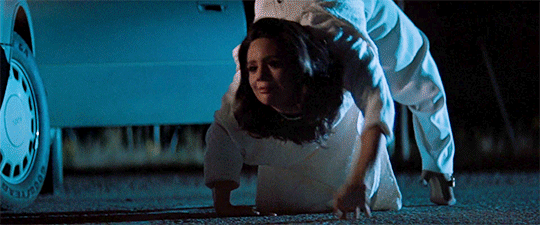


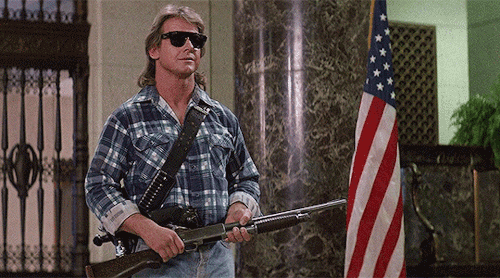
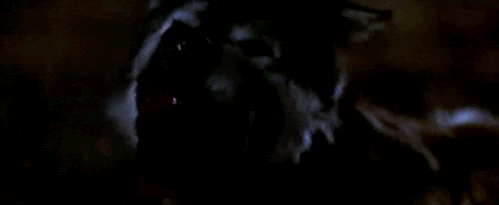
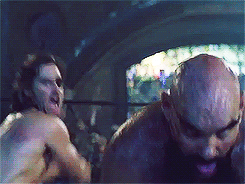

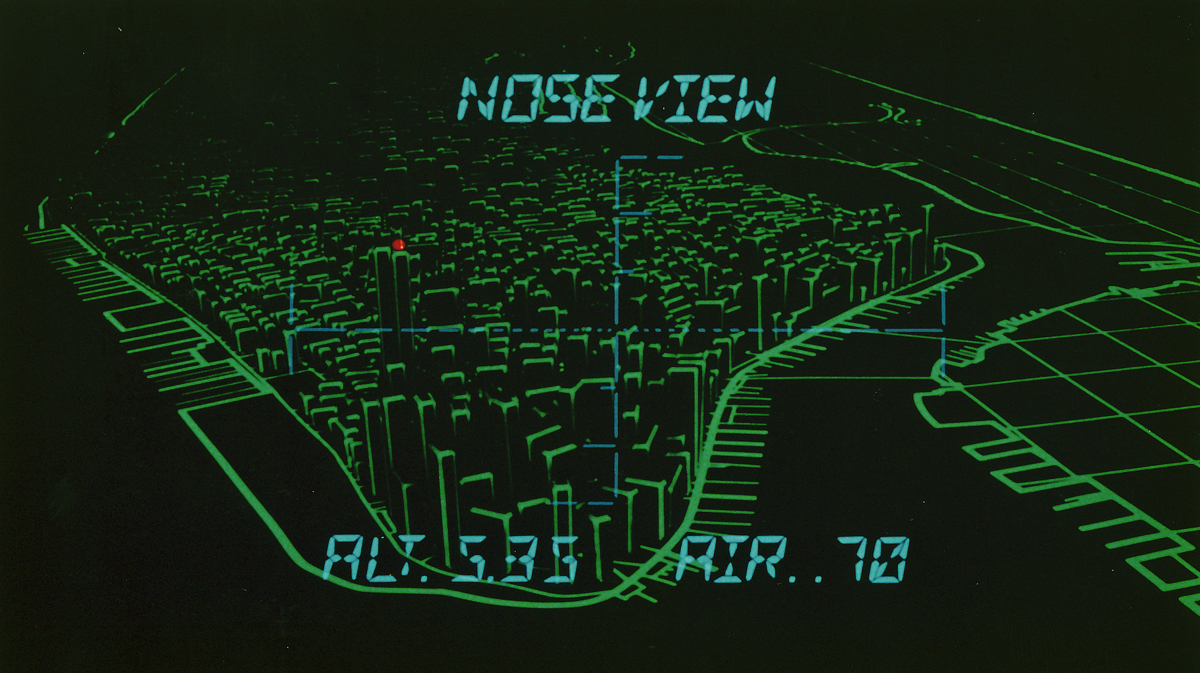





 Now available in North America
Now available in North America 